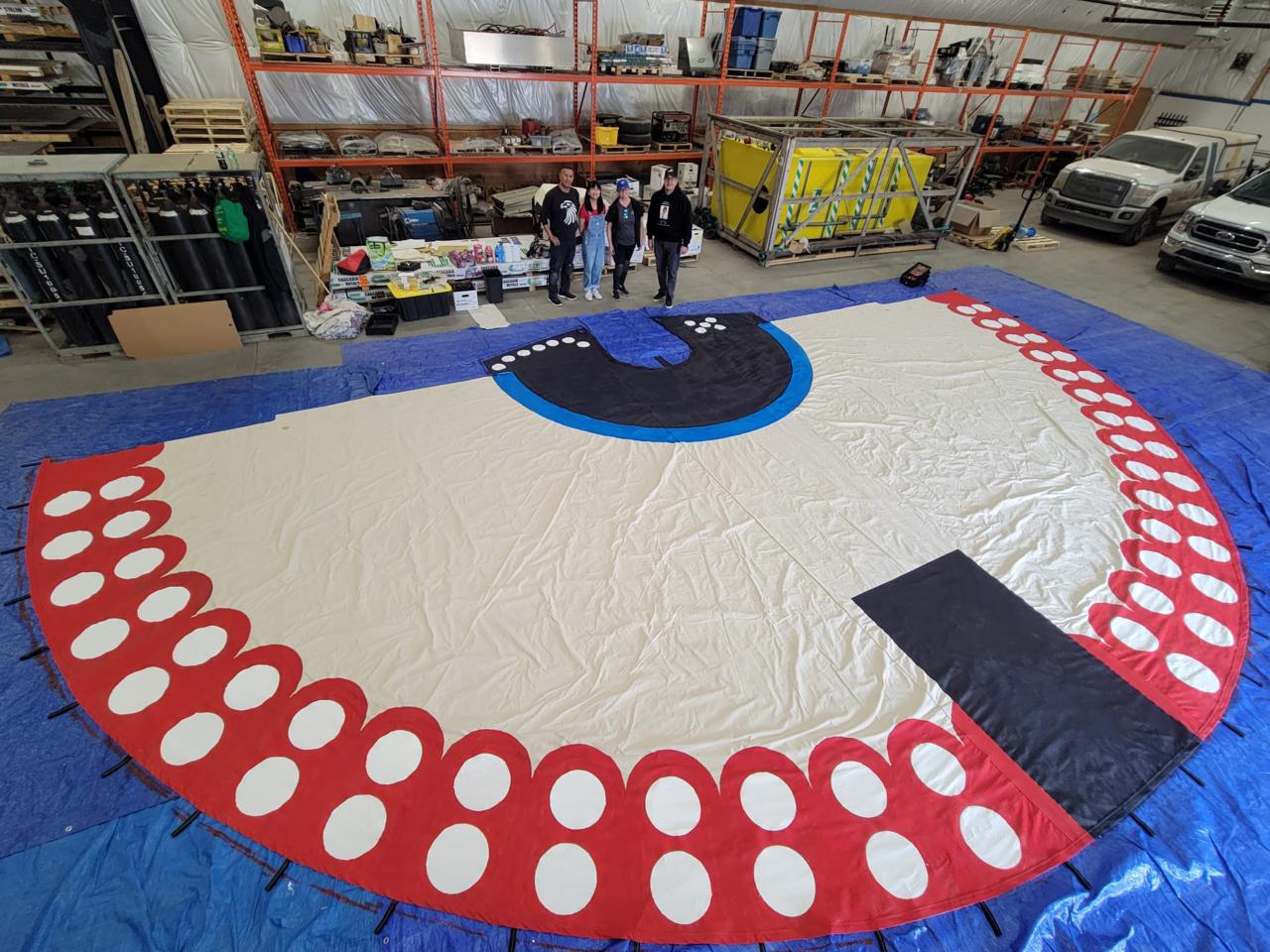 Vibrant paints and meaningful narratives filled the walls of the GlobalFest warehouse this last weekend when the GlobalFest team was honoured by working with the blank canvas of their own tipi, gifted from Blackfoot Crossing Historical Park.
Vibrant paints and meaningful narratives filled the walls of the GlobalFest warehouse this last weekend when the GlobalFest team was honoured by working with the blank canvas of their own tipi, gifted from Blackfoot Crossing Historical Park.
This was a truly prestigious honour. But, with that honour comes enormous responsibility. We take pride in the partnership we have developed with Blackfoot Crossing Historical Park. We are also their biggest external partner.
Although it may seem to simply be a shelter, the tipi reflects the history and traditions of Blackfoot Crossing Historical Park, as well as GlobalFest’s 15-year partnership with Blackfoot Crossing.
“The honour of being given a tipi is highlighted by the fact that they told us we were the first non-Indigenous group that they have given a tipi to,” GlobalFest Artistic/Cultural Director Wendy Wilson remarked.
Being granted this remarkable opportunity over Mother’s Day weekend presented a wonderful opportunity for divine intervention. We had volunteer groups of mothers with sons and daughters, families, and a variety of other groups that showed up to paint on the canvas. This provided a genuine opportunity to recognize the impact of the tipi for everyone who was willing to absorb it.
The Painting Process
The painting process, despite its length, was a profoundly impactful experience for everyone involved, forcing everyone to reconsider the meaning of the tipi in ways they had never considered before.
“There is so much here, the design, the artwork, how does that all come together? It’s a learning process,” explained GlobalFest Chief Operating Officer Ken Goosen.
The gift of a tipi has been a valuable learning experience for the GlobalFest team. In the spirit of reconciliation and respect, we wanted to honour every tradition and guiding principle that comes with owning a tipi. The first step was taken when Elder Clement Leather had a vision of the tipi design and then shared it with the GlobalFest teams.
Then the work began. From the generosity of volunteers over the weekend we were able to tape and paint the canvas over a two-day period. The painting process was an amazingly intimate experience. Stories being passed from the hearts from everyone involved atop of the tipi. The stories told in the midst of creating art became ingrained in the woven canvas for future generations to feel when touching and feeling the spirit within the tipi. This painting experience is just the beginning of the stories that will be etched into the GlobalFest tipi’s walls for future years to come.
“There were so many stories that were shared amongst individuals, while we were painting and while we were taping and that has all been captured within that tipi canvas,” says Goosen.
One of the many beautiful things that is encaptured within the process of designing a tipi is that it is completely human-made. Not fabricated at all.
It was told to GlobalFest volunteers throughout the process by both Ken and Lee of Blackfoot Crossing, do not go back and fix your lines, let the imperfections hold space for a story.
Future Education
GlobalFest intends to use the tipi experience as an educational tool. We wish to raise awareness of the connection between the tipi’s construction and the stories it tells about the land and its people.
“The tipi in itself is just a tipi, it is a structure. It is the stories behind it, it is the information that we share, it is having people there to share that and having materials that speak to the story,” says Goosen.
Schools and community groups are deemed to be at the forefront of receiving the information we are constantly acquiring. However, for people to learn, they must be present and listen.
“We want to make it more right, we want to reconcile,” emphasizes Wilson. “We want to bring everyone through the journey with us.”
The tipi will be featured on the grounds of GlobalFest as well as at pop up events around the city in the coming years.
GlobalFest stands on a message of one community. In order to understand our community we need to share and listen to each individual story. It is a global perspective.
“It is so much more than a tipi, it is an embodiment of who we are in the community,” says Goosen.
